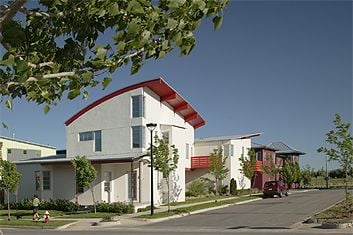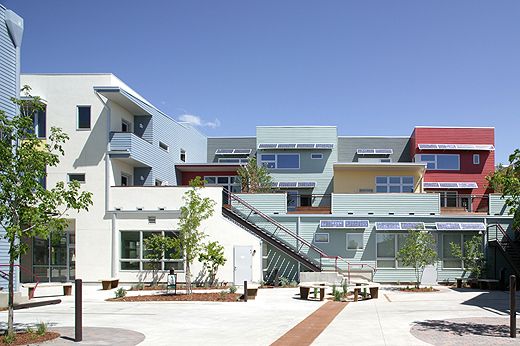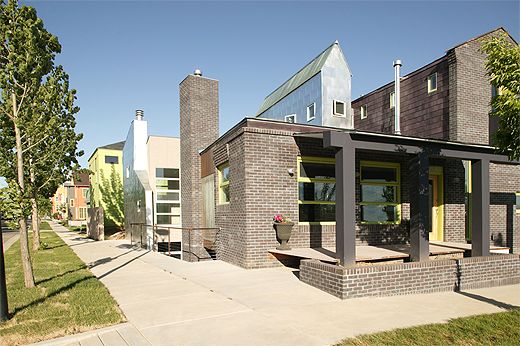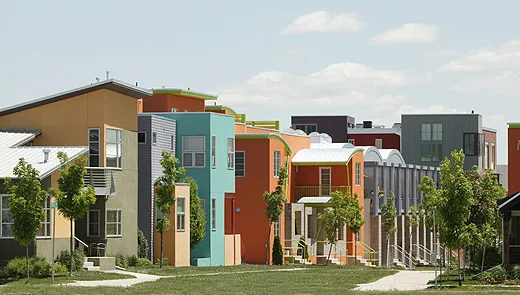Building the New Urbanism
Urban planners take a cue from pre-WWII cities and towns
/https://tf-cmsv2-smithsonianmag-media.s3.amazonaws.com/filer/newurb_1.jpg)
It takes Kiki Wallace one minute to get to work. It’s no accident. He built his neighborhood, Prospect New Town, to be walkable, with wide sidewalks, narrow streets and parks scattered throughout. Most notably, its town center is within five walking minutes of every home.
To create Prospect, the Longmont, Colorado, developer worked with star planners Andrés Duany and Elizabeth Plater-Zyberk. Since its construction, the town has attracted a great deal of interest in the planning community. “We have people from all over the state of Colorado and from other parts of the United States and internationally coming to look at it,” said Wallace. “They’re all wanting to emulate this type of development.”
Post-World War II-style suburban planning assumes that everyone has a car and wants to use it. This model, some urban planners believe, is what accounts for the growing epidemic f obesity, heart disease and diabetes. Now, a growing number of environmentalists, architects and urban planners, including Duany and Plater-Zyberk, are putting their minds together to create human-scale neighborhoods, where parks, shops and schools are all close enough to walk or bike to. They are part of the New Urbanist movement, the most coordinated effort in this country to create these kinds of neighborhoods. “New Urbanism is basically a set of principles to get to that holy grail of a mixed-use, mixed-income, fully socially integrated, non-automobile-dependent kind of place,” said Emily Talen, a professor of urban planning and author of New Urbanism and American Planning: The Conflict of Cultures.
Planned down to the size of the numbers on the houses, New Urbanist communities have a striking regularity about them; the first town Duany and Plater-Zyberk created served as the picket-fenced, pastel-tinted backdrop of the dystopian film The Truman Show.
If, conversely, New Urbanism isn’t edgy enough, head to Arcosanti, architect Paolo Soleri's experimental town rising from the desert north of Phoenix, Arizona. To capitalize on space, Soleri took advantage of the city’s cliff-side location to minimize the use of streets and build in three dimensions. The result is an ultra-compact and contiguous sculptural mélange of tilt-up concrete slabs, high-density housing and work space, sidewalks and...bells. Lots of bells. The manufacture of bronze bells, tourism and workshops support the design interns who are the main workers and occupants of the still-nascent city. Despite Arcosanti’s acclaim as a visionary means of creating urban space (Soleri was honored in July at the White House for his work), it hasn’t yet caught on commercially.
New Urbanism emulates many of the qualities of pre-World War II developments, in part by tacking front porches onto its houses, detaching the garages and shrinking the lawns down to the size of postage stamps. For this reason the movement sometimes goes by the moniker neotraditionalism. That means the features New Urbanists lovingly include in their designs are also available in many older towns and cities across the country. Take, for instance, a city neighborhood such as Uptown, in Minneapolis, or small towns like Portland, Maine, Flagstaff, Arizona, or Madison Wisconsin. All have sidewalks, public transport and discernible centers - central characteristics of New Urbanism. “If it’s walkable and compact and diverse and so forth,” said Duany. “Insofar as it is that, then it’s New Urbanist.”




